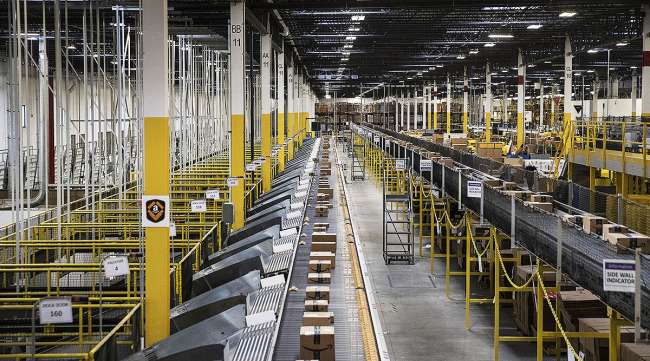Holiday Sales, Delivery Volume Could Smash Records

The big delivery firms are preparing for unprecedented package volumes during the holiday shopping season as retailers say they are on course to set new sales records.
UPS Inc. forecast it would deliver 30 million packages on 17 of the 21 delivery days before Christmas Day. It expects to route a record 750 million packages worldwide in the 25 days between Thanksgiving and New Year’s Eve, a 5% increase from last year.
FedEx Corp. also predicted record deliveries, forecasting volume between 380 to 400 million packages globally. The growth of e-commerce has made Monday a big delivery day, and FedEx reports that package volume on three of the Mondays this holiday season will more than double its average daily volume.
The sales predictions have spurred FedEx, UPS and retailers to go on a hiring spree to man counters and move packages for the holidays. UPS will hire 95,000, FedEx 50,000 and Amazon.com Inc. 120,000, according to the companies.

DHL Supply Chain said it will hire about 6,000 seasonal workers in North America to support its contract logistics, fulfillment, freight transportation and express delivery operations in December. It forecasts volume growth of between 15% to 40% in the United States for the holiday season. DHL is part of Bonn, Germany-based Deutsche Post DHL Group. DHL Supply Chain ranks No. 4 on the Transport Topics Top 50 list of largest logistics companies in North America.
The delivery firms won’t soon forget the 2013 holiday season when an uncounted number of packages were not delivered by Christmas. UPS admitted that high volumes and bad weather meant many consumers wouldn’t be getting their presents and Amazon offered shipping refunds and $20 gift cards to consumers impacted by the mess.
UPS invested $500 million to prepare for the next holiday rush and things went well. Unfortunately, the company spent so much it lowered its profit forecast for fiscal 2014.
Atlanta-based UPS kept improving its sorting and delivery infrastructure. The company completed four new and expanded facility projects this year, creating about 1 million square feet of additional automated operations space, and its sorting and delivery capacity is set to increase about 6%.
“Enhanced customer visibility tools, increased consumer convenience with expanded … network options and the availability of the new Saturday ground delivery and pick-up services are all part of the expanding solutions,” said UPS Chief Sales and Solutions Officer Kate Gutman.
That preparation could pay off as the initial sales numbers indicate the 2017 holiday season could be one for the record books.
Consulting firm Deloitte is predicting that retail holiday sales could rise 4.5% from last year and reach $1.05 trillion between November and January. E-commerce is set to grow as much as 21% to reach $114 billion.
Shoppers will keep cash registers ringing because they are seeing rising personal income and savings and low unemployment rates, and that builds consumer confidence, said Deloitte Senior U.S. Economist Daniel Bachman.
That confidence was fully on display during the long Thanksgiving weekend.
The National Retail Federation announced that more than 174 million Americans spent an average of $335.47 in stores and online from Thanksgiving Thursday through Cyber Monday.
Large online retailers generated a record $7.9 billion in sales on Thanksgiving and Black Friday, a rise of 18% from last year, according to Adobe Analytics, which follows sales at the largest 100 U.S. web retailers.
Amazon dominates Thanksgiving and Black Friday online sales $AMZN https://t.co/ZF7AiCcW3k by @stephpandolph pic.twitter.com/UEQT2GTmdj — BI Intelligence (@BIIntelligence) November 29, 2017
According to Amazon, Cyber Monday 2017 was the single biggest shopping day worldwide in its history, and the biggest day ever for small businesses selling on the site. The giant online retailer grabbed 45% of purchases on Thanksgiving, and 55% on Black Friday, according to an analysis by BI Intelligence Daily.
NRF reported during the Thanksgiving break 64 million consumers shopped online and in person, 58 million shopped online only, and 51 million shopped in store only. The multi-channel shopper spent $82 more on average than the online-only shopper, and $49 more than the in store only shopper.
Senior features writer Daniel P. Bearth contributed to this story.



